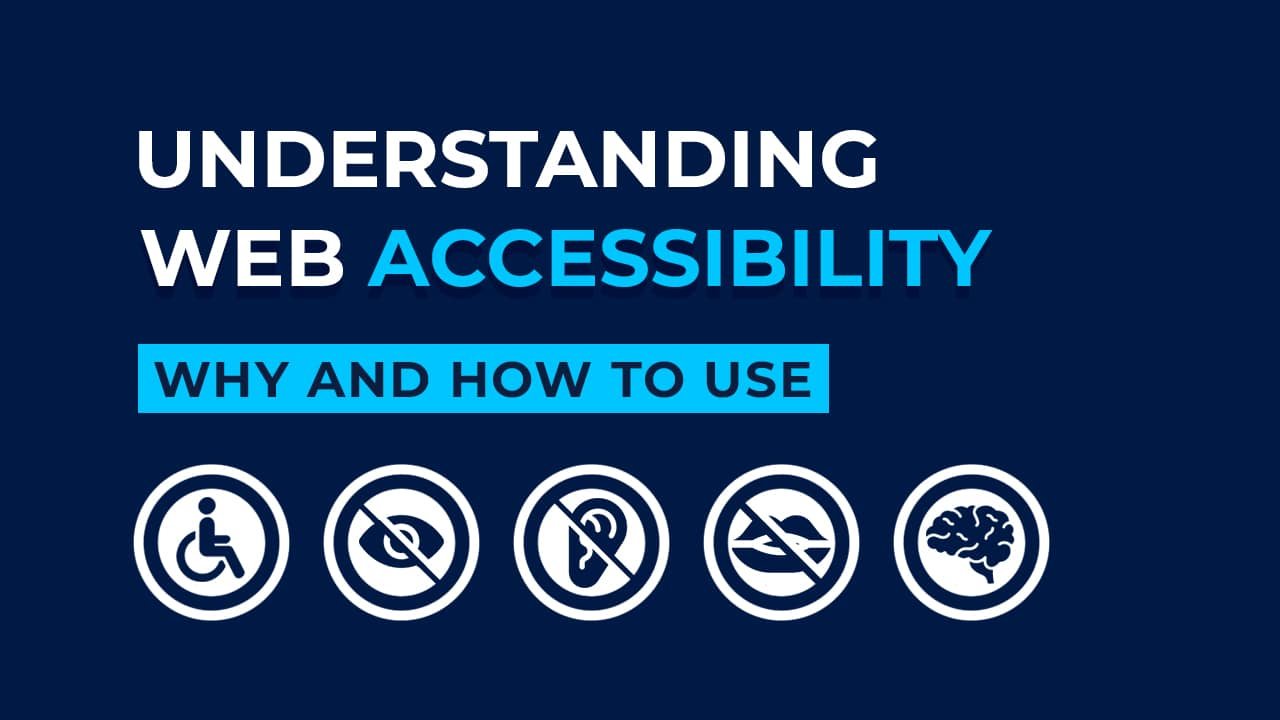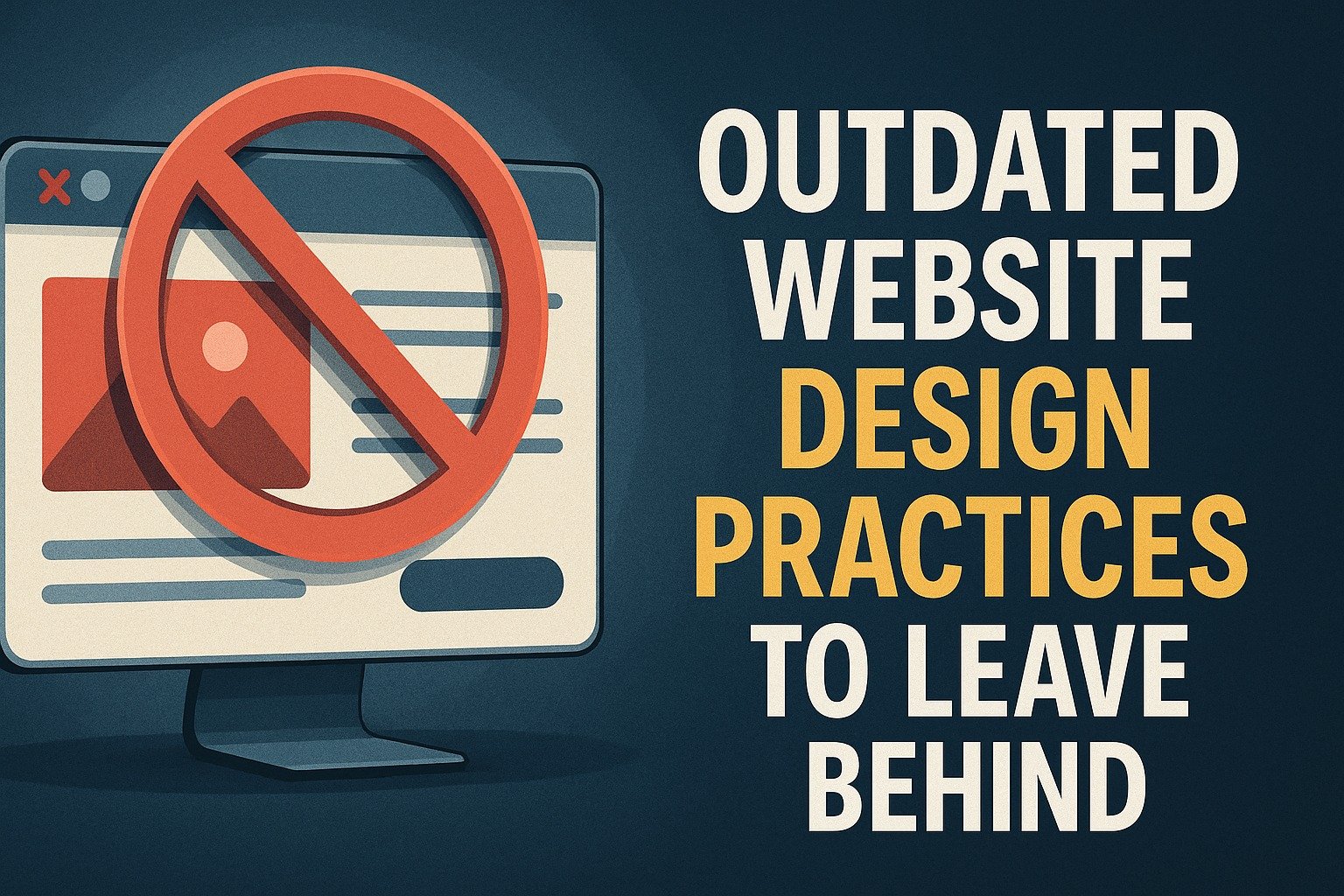Web Accessibility: Designing for All Users

As a web design and development company dedicated to building inclusive digital experiences, we recognize the critical relevance of web accessibility. Designing for everyone goes way beyond just meeting legal requirements. It’s about understanding that people are different—and making sure anyone, no matter their ability, can use and benefit from what’s on your website. In this detailed blog article, we will look at the most important components of Web accessibility and offer advice on how to develop websites that are really inclusive for all users.
Understanding Web Accessibility

Web accessibility just means making sure your website can be used by anyone. That includes people who are blind, hard of hearing, have trouble using a mouse, or process information differently. If your site’s built with care, everyone should be able to read content, click around, and get things done no matter how they’re accessing it.
The Importance of Inclusive Design
The internet is part of pretty much everything we do these days, learning stuff, finding jobs, dealing with government forms, shopping, taking care of our health, or just relaxing. Because it’s so important, it only makes sense that everyone should be able to use it easily, no matter what.
Making websites accessible isn’t just about following rules or helping out a small group. When you build sites that work better for people with disabilities, it ends up making life easier for all of us. Things like simpler layouts, easy-to-find buttons, and clear text help everyone get what they need without getting stuck or frustrated.
Inclusive design is just about remembering people are different and making sure your website works for all kinds of people. When you do that, you’re making the internet a better place for everyone.
Key Principles of Accessible Web Design

1. Perceivable Information and User Interface
Everyone should be able to use and understand websites easily. For example, if there is a picture or video, you should always include text to let people know what is in it. It also means your site should work no matter what kind of phone or computer someone’s using, and people should be able to make the text bigger or smaller if they want. The point is to help everyone find and use buttons, menus, and other stuff without any trouble.
2. Operable User Interface and Navigation
Everyone should be able to get around your website without trouble. For people who don’t use a mouse, all the features should work with a keyboard. Users should have enough time to read and interact with things on the page. It’s also important to avoid flashing or blinking stuff that could cause seizures. Plus, finding what you need on the site should be simple and straightforward.
3. Clear and Simple Information and Controls
Your site’s words and controls need to be easy to read and understand. Pages should work the way people expect so they’re not confused. If someone makes a mistake, the site should help them fix it without making it complicated. This helps everyone feel more comfortable and confident while using your site.
4. Robust Content and Reliable Interpretation
Your website needs to work well on all kinds of devices and tools, including screen readers and other assistive tech. As new devices and programs come out, your site should still be easy to use. This way, no matter what someone is using, they can get to your content and features without any hassle.
Implementing Web Accessibility

Use the Right Tags
When building your site, use the right tags for each part. Buttons should use the button tag, headings with heading tags, and menus with navigation tags. This helps people who use screen readers understand what’s what. It’s like labeling things so everyone can follow along easily.
Make It Work with Just a Keyboard
Some people don’t use a mouse, so make sure your whole site can be used with a keyboard alone. That means all buttons, menus, and forms should work just by pressing keys. Testing this way helps you catch any spots where keyboard users might get stuck.
Add Descriptions for Pictures
Always write short descriptions for images so people who can’t see them know what’s there. These descriptions, called alt text, help screen readers explain pictures. Keep it simple and clear, so nobody misses important info just because they can’t see the image.
Make Forms Clear and Simple
Every form field should have a label that says what it’s for. If someone makes a mistake filling it out, your site should explain the problem in plain words and help fix it. This makes forms easier and less frustrating for everyone.
Be Careful with Colors
Make sure your text and background colors are easy to tell apart. Don’t use color alone to share important info because some people can’t see colors well. Use patterns, labels, or shapes along with color to make things clear for everyone.
Design for All Screens
Your site should look good on phones, tablets, and big screens. It should also adjust if someone zooms in or changes the text size. Making your site flexible means anyone can use it comfortably, no matter what device they’re on or how they view it.
Help People Watch and Listen
If you have videos or audio, add captions or transcripts so people who are deaf or hard of hearing don’t miss out. Captions also help people in noisy places or those who prefer reading. This way, more people can enjoy your content.
Keep Things Consistent
Keep menus, buttons, and layout the same across all pages. This helps everyone get used to your site’s structure and find their way around easier. Consistency is especially helpful for people who use assistive tools or have learning difficulties.
Ask People to Test It
Get real people with disabilities to try your site and share their experience. They’ll notice things that automatic tools might miss. Their feedback is valuable and helps you make your website better and easier for everyone to use.
The Legal and Ethical Implications

Making your website easy for everyone to use isn’t just the right thing to do, it’s also the law in many places. In the U.S., for example, the Americans with Disabilities Act (ADA) says websites need to be accessible. The UK has similar rules with the Equality Act. If you don’t follow these, it can lead to legal problems and make people think less of your brand. That’s why at VareWeb, we focus on web design that works for all users, helping you avoid trouble and reach more people.
Conclusion
Making websites easy for everyone to use isn’t just a rule, it’s about doing what’s right. At VareWeb, we believe web accessibility means thinking about all kinds of people when designing a site. It helps you reach more visitors and shows you care about everyone’s experience.
The web keeps changing, so designers and developers need to keep up and find new ways to make sites simple and easy for everyone. Want a website that works well for all users? We’re here to help you make that happen and create a better online experience for everyone.
Take Your Business to the Next Level with VareWeb!
✔️ Bringing Your Ideas to Life – From custom software to powerful applications, we create solutions that work for you.
✔️ Practical & Results-Driven – Our team is dedicated to developing efficient, user-friendly, scalable technology that fulfills real-world needs.
✔️ For Startups & Enterprises – Whether you’re starting a new business or enhancing an existing one, we can help you remain ahead.
Let’s build something great together—what’s your next big move? Contact us today!
You may also like
The Importance of Logos for Small Businesses
Starting a new business, working on a passion project, or...
Read More >>Cinemagraphs in Website Design
If you’re into web design, you’ve probably seen those moving...
Read More >>Outdated Website Design Practices to Leave Behind
It is important to follow the latest trends in web...
Read More >>Ready to take the
next step?
- contact@vareweb.com
- Contact no: +1 (469) 20466-6031
- 5400 Preston Oaks Rd, Dallas, TX 75254, USA




